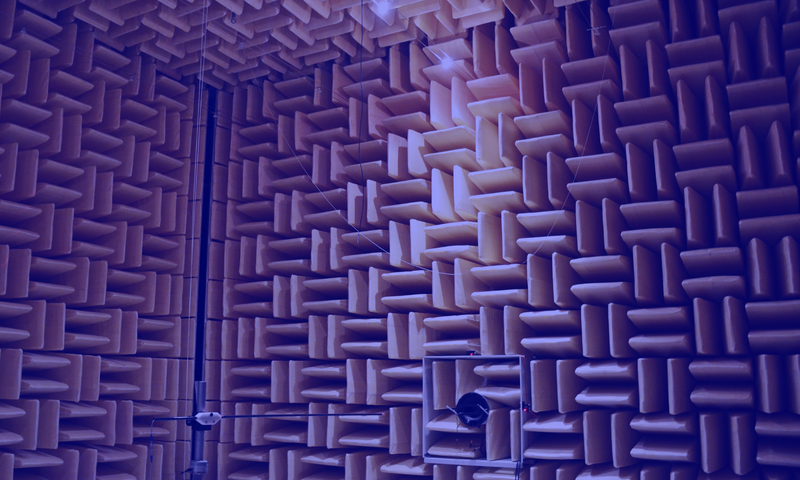Acoustic tests
What are acoustic tests?
Acoustic tests refer to the noise generation of machines, other products or rooms, among other things. The sound emission or noise pollution that can occur is examined. These so-called acoustic tests are therefore used in many areas. The purpose of the acoustic tests is to determine the loudness of a product. To do this, the test centres in the acoustics laboratory or on-site measure which noises and vibrations the product emits. After evaluating the acoustic test, a manufacturer knows whether or not he needs to revise his product and reduce the noise level.
Numerous directives and laws, such as the Federal Immission Control Act (BImSchG), the VDI guidelines, those of the European Parliament and the Council, lay down regulations for protection against noise. Prolonged exposure to noise can lead to physical and psychological health problems. Noise is also suspected of causing environmental disturbances. In short, the laws serve to control noise levels and protect people who work in rooms/places with noise (e.g. in a factory) or with machines and equipment (e.g. computers and printers).

In addition to the laws on noise protection, some standards specify how the sound emission of equipment is to be tested. Thus, acoustic tests can occur under natural conditions on-site, such as at the workplace, or inappropriate rooms such as a reverberation room. Regulatory authorities such as the European Agency for Safety and Health at Work (EU-OSHA) also advocate that manufacturers are obliged to provide appropriate information on noise emission.
There are two measurement factors for determining sound emission in acoustic tests or noise and vibration measurements. One is good power, and it measures any acoustic energy emitted by a device, regardless of the room or other conditions. Secondly, sound pressure is a measurable factor. This measures the noise impact when used, for example, typing on a keyboard or using a printer at the workplace. The acoustic test is carried out on-site and is therefore dependent on the environment and location.
Which products require an acoustic test?
An acoustic test is generally necessary for all industries and areas where people could suffer damage to their health due to permanent annoyance caused by noise. This includes devices that produce disturbing and loud sounds or humming noise. The following products, for example, need to be tested according to specific test standards:
- Office and communication equipment: desktop PCs, notebooks, printers, scanners, keyboards, monitors with fans, e.g. according to ISO 7779: Noise emission measurement of information and telecommunication technology equipment.
- Household appliances: refrigerator, washing machine, microwave oven, dishwasher, e.g. according to ECMA-370: Environmental Product Attributes, Emissions
- Mechanical machines and devices such as lawnmowers or chain saws are subject to the EC Machinery Directive 2006/42/EC. They are tested, e.g. according to DIN EN ISO 4871:2009 Acoustics - Declaration and verification of noise emission values of machines and devices.
Where can I have acoustic tests carried out?
You can have the noise emissions of machines, building acoustics measurements or the testing of environmental noise following, for example, European noise protection directives determined and carried out in an uncomplicated manner with testxchange. testxchange examines your products, machines etc., following international and national standards (DIN, EN, ISO, ASTM, IEC, CISPR, and others).
As an OEM, manufacturer or retailer, you are agile worldwide and do not precisely know which standard or guideline you should have a product tested? Our project engineers know are experts and will be happy to help you.
Need acoustics testing?
If you need assistance in acoustics testing, you can contact us directly. If you are interested in other fields of testing, we will be happy to assist you as well.